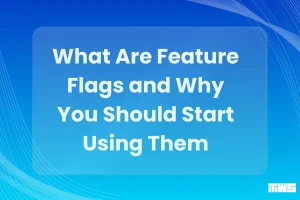
Table of Content
Healthcare is one of the most promising — and most regulated — sectors for digital innovation. Whether you’re building a fitness tracker, a telemedicine app, or an AI-powered diagnostic tool, the moment your product interacts with health data or influences clinical decisions, it enters a tightly controlled legal landscape.
For startups and small to medium-sized companies, navigating this landscape early is critical. Missteps can lead to costly delays, regulatory penalties, or even product recalls. But with a clear understanding of what’s expected — and when in the product lifecycle to address it — compliance becomes less of a hurdle and more of a framework for building trustworthy software.
This article breaks down key healthcare software regulations in the United States and European Union. It also outlines practical steps companies can take throughout the product lifecycle — from concept to launch and beyond — to stay compliant while building effective, secure, and market-ready solutions.
Key Regulations in the United States
Developing healthcare software for the U.S. market means working within one of the world’s strictest regulatory environments. Compliance ensures not only patient safety but also the credibility and marketability of your product.
HIPAA – Health Insurance Portability and Accountability Act
If your software handles protected health information (PHI) — think patient records, test results, insurance details — HIPAA compliance is mandatory. HIPAA applies to “covered entities” like healthcare providers and insurers, and their “business associates,” which often include software vendors.
Key requirements for healthcare software include:
- Data encryption at rest and in transit
- Role-based access control to limit who sees sensitive information
- Audit logging to track access and modifications to data
- Backup and disaster recovery protocols to maintain data integrity
It’s important to embed these considerations early in the design phase, not as an afterthought. HIPAA penalties can be severe, ranging from financial fines to mandatory corrective action plans.
FDA Regulations – Medical Device Software
Not all healthcare software is classified as a medical device, but when it is, the U.S. Food and Drug Administration (FDA) steps in.
Software is considered a medical device if it is intended to diagnose, cure, mitigate, treat, or prevent disease. This includes AI diagnostic tools, remote patient monitoring apps, and decision-support systems for clinicians.
Key FDA considerations:
- Risk classification: Devices are classified into Class I, II, or III based on risk level, affecting the regulatory pathway.
- Pre-market approval or clearance: Depending on classification, you might need to submit a 510(k) notification or a Pre-Market Approval (PMA) application.
- Design controls and validation: Extensive documentation and proof that the product meets intended use and safety requirements are mandatory.
Ignoring FDA obligations can result in product seizure, fines, or even criminal charges.
Other US-Specific Laws and Frameworks
Beyond HIPAA and the FDA, several other laws can influence healthcare software development:
- HITECH Act: Strengthens HIPAA enforcement and promotes electronic health records (EHR) adoption. Requires notification of data breaches affecting 500+ individuals.
- 21st Century Cures Act: Focuses on interoperability and patient access to their own health data, impacting APIs and health IT systems.
- State Regulations: States like California have added layers of patient privacy protections through laws like the California Consumer Privacy Act (CCPA), which applies to companies handling personal data of California residents.
Staying compliant often means balancing federal and state requirements, especially for products launched nationwide.
Real-World Example: Building a Telemedicine Platform
Let’s say you’re planning to develop a telemedicine platform that connects patients with doctors for virtual consultations. This type of solution touches nearly every major regulatory framework in the US:
1. HIPAA
Your platform will collect and store sensitive patient information — medical history, live video consultations, diagnostic reports — which are all considered PHI. You’ll need to:
- Ensure secure video and chat transmission using encryption standards
- Implement access control for both doctors and patients
- Maintain audit trails and secure backups of medical interactions
2. FDA (Depending on Features)
If your platform includes diagnostic tools, such as AI that analyzes symptoms or images and suggests potential conditions, it may be classified as a Software as a Medical Device (SaMD). In that case:
- You’ll need to assess the product’s risk class
- Document intended use, user testing, and clinical validation
- Possibly submit a 510(k) or other premarket notification to the FDA
3. 21st Century Cures Act Compliance
To meet interoperability requirements:
- Ensure your software can exchange data with EHR systems via APIs
- Allow patients access to their consultation records and treatment notes
4. HITECH Act & Breach Notification
In case of a data breach affecting more than 500 individuals:
- You must report the incident to HHS and notify affected individuals
- You’ll also need a response and remediation plan in place ahead of time
5. State Laws Like CCPA
If you offer your service in California:
- Include a mechanism for patients to review, delete, or export their data
- Add clear privacy policy language around how their data is used and stored
Key Regulations in the European Union
Healthcare software targeting the European market must comply with a layered regulatory framework that protects patient privacy, ensures product safety, and enforces security throughout the system’s life.
GDPR – General Data Protection Regulation
If your product collects, stores, or processes personal health data of EU residents, GDPR applies. Health data is considered a special category of personal data under GDPR, which means stricter rules for consent, access, and processing.
What this means for your software:
- Clear, informed consent: Users must explicitly agree to data collection. Pre-checked boxes and vague opt-ins won’t cut it.
- Data minimization: Collect only what is strictly necessary for your app’s function.
- Security by design and by default: Encrypt data, enforce strong access control, and plan for data protection from the outset.
- User rights: Users have the right to access, correct, delete, and port their data — and your software must make this possible.
You’ll also need to determine your role: are you a data controller (deciding why and how data is processed) or a data processor (acting on behalf of another organization)? Each comes with specific obligations under GDPR.
MDR – Medical Device Regulation
The Medical Device Regulation (MDR) governs software that performs a medical purpose — such as diagnosing, preventing, or monitoring diseases. It replaces the older Medical Devices Directive (MDD) and significantly tightens oversight.
Does your software qualify as a medical device?
- If yes, you must classify it under MDR: Class I (low risk) to Class III (high risk)
- Most software tools used for diagnosis or monitoring fall into Class IIa or higher
MDR compliance requires:
- Clinical evaluation: Evidence proving safety and performance
- Risk management: Throughout development and maintenance
- CE marking: You must obtain CE marking before the product can be legally marketed in the EU
- Post-market surveillance: Ongoing monitoring for risks and incidents after launch
Failure to meet MDR requirements can block your product’s access to the European market entirely.
NIS2 Directive (Cybersecurity Obligations)
The NIS2 Directive expands EU cybersecurity obligations to more sectors, including healthcare. While it primarily targets critical infrastructure, software providers working with hospitals or national healthcare systems may fall under its scope.
If applicable, your organization may need to:
- Report major security incidents within strict timelines
- Implement business continuity and incident response procedures
- Conduct regular cybersecurity audits and employee training
Real-World Example: Building a Telemedicine Platform in the EU
Suppose you’re launching a telemedicine app for users in France and Germany. Here’s what you’d need to account for:
1. GDPR Compliance
- Use localized, language-specific consent forms explaining data collection purposes.
- Allow users to delete accounts and export their medical records.
- Secure all patient communications, whether via video, audio, or text.
2. MDR Classification
- If your app includes symptom checking or remote monitoring of chronic conditions, it may be classified as a medical device under MDR.
- You’ll need a notified body to assess conformity if it’s Class IIa or above.
- A full technical file, risk management report, and clinical data will be required before you apply for CE marking.
3. Post-market Obligations
- Set up mechanisms for collecting feedback, reporting incidents, and delivering updates.
- Ensure that any significant software modifications (e.g., algorithm updates) are re-evaluated for regulatory compliance.
4. Cybersecurity Readiness under NIS2
- If your app connects to healthcare facilities or national systems, regular penetration testing and incident response planning are essential.
Regulations in the EU emphasize user empowerment, safety, and transparency. Complying from the start builds the kind of trust that accelerates growth across Europe’s highly interconnected healthcare markets.
Regulatory Considerations Across the Product Lifecycle
Successful healthcare software doesn’t just meet regulatory standards at launch — it integrates compliance into every phase of product development. Here’s how to approach regulations across the product lifecycle:
Design and Discovery Phase
This is where foundational compliance decisions are made — and where regulatory missteps are easiest to prevent.
What to focus on:
- Regulation mapping: Identify which regulations apply based on your users, features, data types, and geographic reach (e.g., HIPAA, GDPR, MDR).
- Privacy by design: Plan features like consent collection, user access controls, and data minimization from the start.
- Security by design: Define how your system architecture will ensure encryption, access control, secure storage, and audit logging.
- Risk analysis: Document potential risks (e.g., data breaches, software malfunctions) early and plan mitigation strategies.
Questions to ask at this stage:
- Are we collecting only the data necessary for our services?
- Could our product be classified as a medical device under FDA or MDR?
- What user rights must we support (data access, deletion, portability)?
Early compliance mapping saves time, money, and credibility later on.
Development and Testing Phase
Once you move into implementation, compliance becomes more technical — but no less critical.
Key practices to follow:
- Implement secure development standards: Use established frameworks (e.g., OWASP Top Ten for application security, ISO/IEC 27001).
- Integrate documentation into the development process: Log decisions around data storage, encryption methods, access permissions, and testing protocols.
- Simulate regulatory audits internally: Ensure your team can trace every critical feature back to a regulatory requirement if needed.
- Test for vulnerabilities: Perform security testing, penetration testing, and validation exercises tailored to healthcare contexts.
If your software qualifies as a medical device (under MDR or FDA), formal verification and validation (V&V)procedures are required. Testing must demonstrate that the product consistently meets its intended use safely.
Launch and Maintenance Phase
Regulatory compliance does not end with the first product launch — it evolves with every software update, user expansion, or regulation change.
Post-launch tasks include:
- Ongoing performance monitoring: Collect real-world evidence of safety and effectiveness if your product is classified as a medical device.
- Incident management: Establish processes for identifying, documenting, and reporting security breaches or product failures within mandatory reporting timelines (HIPAA breach notification, MDR vigilance reports).
- Regular security audits: Update encryption standards, penetration tests, and risk assessments to reflect the current threat landscape.
- Regulatory updates monitoring: Assign responsibility for tracking changes to relevant regulations (e.g., GDPR interpretations, FDA guidance updates).
- Re-certification and reassessment: Significant changes to your product’s features or functionality (especially under MDR or FDA rules) may require re-approval or new technical documentation.
Non-compliance during post-launch isn’t less risky — it can lead to product withdrawals, fines, loss of customer trust, and even bans from entering new markets.
Seeing regulatory compliance as an ongoing, built-in discipline — rather than a late-stage hurdle — can save companies from costly pivots and rushed patchwork fixes.
Common Pitfalls to Avoid
Even well-intentioned teams can miss key compliance requirements if they’re not embedded into every stage of product development. Here are some of the most frequent — and avoidable — pitfalls when building healthcare software:
Ignoring Consent and Transparency
Many products assume users understand or agree to data collection just by signing up — but this won’t hold up under GDPR, HIPAA, or CCPA scrutiny.
Avoid by:
- Offering clear, plain-language explanations of what data is collected and why
- Providing explicit opt-in options (no pre-checked boxes)
- Making it easy for users to access, export, and delete their data
Consent should be a visible, respected process throughout the user journey.
Misclassifying Your Software to Avoid Regulation
Some companies downplay a product’s functionality to sidestep FDA or MDR classification — for example, calling an AI diagnostic system a simple “wellness tool.” This shortcut can backfire severely.
Avoid by:
- Defining your software’s intended use clearly and honestly
- Consulting regulatory guidance (e.g., FDA’s SaMD guidance, EU MDR rules) early
- Documenting your classification logic for audits
Misclassification risks forced product removal, hefty fines, and reputational damage.
Treating Security as an Afterthought
Healthcare data is a prime target for cyberattacks. Many breaches happen due to basic vulnerabilities like unencrypted APIs, poor authentication systems, or insufficient user permission controls.
Avoid by:
- Embedding security reviews into every development sprint
- Using end-to-end encryption, strong identity management, and multi-factor authentication
- Planning and regularly testing an incident response strategy
Security must be proactive, not reactive.
Underestimating Documentation Requirements
Regulators require clear proof that your product meets standards — not just code or claims. Missing documentation is one of the fastest ways to fail an audit.
Avoid by:
- Keeping a living set of technical files, risk management logs, and clinical evidence if needed
- Version-controlling all policies and design specifications
- Documenting updates and patches systematically
Good documentation isn’t overhead; it’s your product’s legal and operational foundation.
Failing to Plan for Change
Healthcare regulations, cybersecurity threats, and market expectations evolve. Static compliance strategies quickly become outdated.
Avoid by:
- Assigning a compliance or regulatory owner within your organization
- Subscribing to regulatory alerts and industry updates
- Building modular systems that allow faster updates to privacy controls, security protocols, or consent flows
Avoiding these pitfalls isn’t just about staying out of trouble. It’s about creating a resilient product that can grow, adapt, and succeed in a changing healthcare environment.
Final Thoughts
Building healthcare software is about more than technical execution — it’s about trust. Every feature you design, every data point you collect, and every market you enter brings regulatory responsibilities. For startups and SMEs, this can feel overwhelming at first, but regulatory alignment doesn’t need to slow innovation.
Start by understanding the rules that apply in your target regions — HIPAA and FDA regulations in the U.S., GDPR and MDR in the EU — and plan for compliance from the first design sketch through post-launch updates. The key is to treat regulation not as a final hurdle, but as a framework for long-term product success.
Compliant software earns patient trust, builds stronger partnerships with healthcare providers, and avoids costly surprises during audits or launches. It also signals to investors, partners, and users that your product is not just innovative — it’s reliable, responsible, and ready for scale.
If your team is building healthcare technology, it’s worth investing in regulatory awareness early. The right preparation turns complexity into clarity and gives your product the credibility it needs to succeed in one of the most impactful industries of our time.
You May Also Like
Building Digital Solutions That Drive Results
We design and build scalable digital products tailored to your business goals — from web and mobile apps to complex systems.


